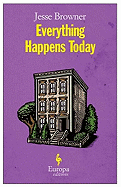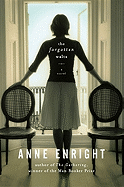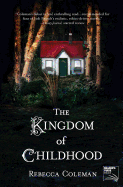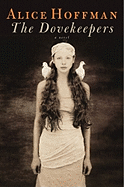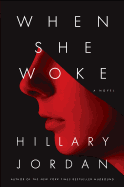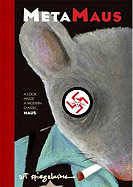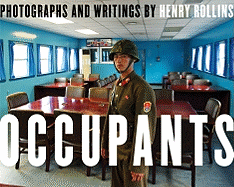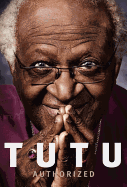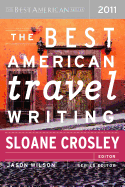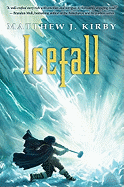Tuesday, October 4, 2011
Today is the official publication date of a book that marks several major milestones in the book world. For one, it shows how far the graphic novel has come in the past quarter century. For another, it shows how far the book has come in that same period. The book we're talking about is MetaMaus: A Look Inside a Modern Classic by Art Spiegelman, a graphic novel with accompanying DVD that is a tribute to Maus, the first part of which was published in 1986. (See our review of MetaMaus, published by Pantheon Books, below.)
The book we're talking about is MetaMaus: A Look Inside a Modern Classic by Art Spiegelman, a graphic novel with accompanying DVD that is a tribute to Maus, the first part of which was published in 1986. (See our review of MetaMaus, published by Pantheon Books, below.)
The original Maus came out at a time when graphic novels were, well, novel to most readers and when many in the industry considered them unsuitable for bookstores or libraries. More than any other graphic novel, Maus changed all that. The tale of Spiegelman's father's survival of the Holocaust--whose main characters were Jewish mice and Nazi cats--was a familiar, sad story that in graphic form somehow became immediate and powerful.
Still, it took a while for strictures to loosen up. The Complete Maus, including the second part, published in 1992, eventually won a Pulitzer Prize--the sole graphic novel to do so--but only after the confused board created a special award. (Not even this writer was immune from an embarrassing brush with Maus: as paperback review editor at Publishers Weekly in 1986, I passed on reviewing Maus since we didn't review comics....)
Now, of course, graphic novels are an important part of the book world, carried in most bookstores and highly popular in libraries. And no one would decline to review a graphic novel because of its format.
MetaMaus is also striking because of the accompanying DVD--technology that didn't exist 25 years ago. The DVD contains a wealth of wonderful material, including audio recordings and transcripts of interviews with Spiegelman's father, a digitized reference copy of The Complete Maus, family documents, essays and copies of the author's notebooks and sketchbooks. It's a treasure trove of material that readers in 1986 couldn't have obtained anywhere.
So here's to the Maus that changed so much!
Happy reading! --John Mutter
The Forgotten Waltz
by Anne Enright
Readers who fell in love with Anne Enright's 2007 Man Booker Prize-winner The Gathering might need a little pre-gaming to appreciate The Forgotten Waltz. On the surface--and this is a novel that examines surfaces without pity--Gina Moynihan is a less sympathetic narrator than Veronica Hegarty. In The Gathering, Veronica's preoccupations are familial. In The Forgotten Waltz, Gina performs a more singular aria of adulterous desire, and in place of family complexity there is economic excitement: Gina's affair is set on the cusp of the collapse of the Irish real estate boom, in an illustration of how one cupidity can fuel another.
For all its hotel assignations, The Forgotten Waltz is not explicit--Gina recounts her besottedness in swirly retrospect, from within a 2009 snowstorm that brings Dublin to a halt. Lest things get too sentimental, chapters are adorned with ironic love song titles and illicit caresses are reckoned against property values. As Gina progresses through her tale of grand amour, she gradually notices the innocent and injured parties, and she suffers a sudden loss. At the end, Gina receives a comeuppance of sorts, one that expands her experience of life rather than extinguishes it.
For readers who can countenance unapologetic female infidelity (at least in fiction), The Forgotten Waltz is a must-read--it delivers Enright's incantatory and highly mineralized prose, her virtuoso capturing of mood and confirms her ability to create nuanced characters of all ages and backgrounds. This mature novel flaunts a wry, take-no-prisoners narrator who can make you laugh and wince. --Holloway McCandless, blogger at Litagogo: A Guide to Free Literary Podcasts
Discover: A swirling reappraisal of adulterous love set against the decline of Ireland’s property boom.
Everything Happens Today
by Jesse Browner
In this 60th anniversary year of the quintessential novel of New York teen angst, Catcher in the Rye, Jesse Browner's Everything Happens Today updates Holden Caulfield and perhaps even bests Salinger with a funnier, kinder and wiser tale.
Born Leslie, Wes took up his new name when a summer campmate misheard his mumbled "Les." ("Any idea how hard it is for a boy named Leslie?") He's no alienated whiner--just a sensitive, iPhone-toting 17-year-old with a knack for creative writing and a fantasy longing for his aloof Dalton School classmate Delia. This romance is not to be consummated; instead, he loses his virginity to the school flirt Lucy after several Bloody Marys at her Upper East Side vacationing parents' apartment.
Wes's long day continues with a contemplative walk back home to Greenwich Village--a day in which "Everything had happened, and nothing had happened." He is the family caregiver, watching over his bedridden mother dying of MS; his deadbeat, philandering, "failed novelist" father; and his adorable, innocent little sister. The day ends with his surprisingly competent cooking of sweetbreads and baby bok choy in an unsuccessful attempt at a congenial family meal.
With a sympathetic understanding of today's teen world, Browner (translator, journalist and author of the surprise hit The Duchess Who Wouldn't Sit Down) perfectly captures the language and confusion of a life that is "all too complicated; it made War and Peace feel like The Runaway Bunny." –-Bruce Jacobs, founding partner, Watermark Books & Cafe, Wichita, Kans.
Discover: A dead-on novel of a day in the life of a confused but generous Greenwich Village teen.
The Kingdom of Childhood
by Rebecca Coleman
There's a scene early in The Kingdom of Childhood where Judy, a kindergarten teacher at a Waldorf School in Maryland, is driving in a car with Zach, the high school student on whom she's becoming sexually fixated, and "Mrs. Robinson" comes on the radio. "It's about an older woman who's into younger guys," he says, half-tauntingly, half-seductively, and she refutes him: "It's about a woman who's going crazy. She's trapped in the suburbs and in her crappy marriage and she's losing it." Then, after thinking about it a bit, she offers, "Maybe it's both. Would you blame her?"
It's not really both, though. As the relationship unfolds, it becomes increasingly clear that having sex with a 16-year-old is but the latest in a string of disturbing choices Judy has made, stretching back to childhood amidst a family history of mental illness. Rebecca Coleman deftly portrays Judy's hair-trigger emotional condition, the volatile shifts from accusing Zach of leaving her for a girl his own age to offering him a conciliatory hand job. While Judy's story is told from a first-person perspective, Coleman tackles Zach's confused responses--as his initial enthusiasm gives way to reluctant but exhausted compliance--from the third person. The shifts eventually settle into a comfortable rhythm, and as readers get deeper into Judy's state of mind, they offer a useful reality check.
The sense of isolation and claustrophobia heightens as Judy and Zach's affair begins to smother them both. The real world can't be pushed aside forever, however, and when Judy's precarious fantasy begins to collapse, readers will anxiously anticipate who else she'll take down with her. --Ron Hogan, founder of Beatrice.com
Discover: An expertly paced story that infuses one of our most lurid tabloid memes with hints of Endless Love and Bonjour Tristesse.
The Dovekeepers
by Alice Hoffman
Alice Hoffman (The Red Garden) has composed a beautiful fictional saga of four intrepid women brought together during the siege of Masada in 70 C.E. Yael's father, a famous assassin, has not forgiven her for being born in the moment her mother died. Revka is grandmother and caretaker to two mute boys who bear silent witness to her constant bravery and guilt over the death of her daughter in the desert. Raised as a boy, Aziza has a warrior's heart and skill, both of which draw her into the arms of another warrior. Aziza's mother, Shirah, dubbed "the Witch of Moab," has extensive knowledge of ancient medicine and magic, but she knows that all her powers cannot undo the fate that awaits her.
The four women are brought together in Masada by their occupations as dovekeepers, but it is destiny that keeps them bound to each other. Each one is blessed and cursed by love; before their stories end, each one divulges her secrets. The intricate storyline stunningly unfolds in Hoffman's usual lyrical style, greatly enhanced by the depth of her research (including the only contemporary account of Masada's fall, by the Roman-Jewish historian Josephus). Drawing upon these historical sources, Hoffman vividly captures the world of her characters in sharp detail. The narrative lives of each engaging character are arranged cleverly, weaving a little more into the fabric of Hoffman's tapestry every time. Ultimately The Dovekeepers is an ambitious tour de force not to be missed. --Sarah Borders, librarian, Houston Public Library
Discover: The compelling epic tale of the fall of Judea, told through the intersecting stories of four remarkable women.
When She Woke
by Hillary Jordan
In this dystopian novel by Hillary Jordan (winner of the 2006 Bellwether Prize for Mudbound), a disease that causes sterility in women has swept across the country and a political party lead by evangelical megachurches has come to power. Meanwhile, the government has introduced a new kind of punishment called "chroming": a virus is injected into the condemned person, changing skin pigment to correspond to the severity of the crime, with red reserved for the most violent.
Hannah Payne is a young woman raised in a megachurch. Against her religious upbringing, she has an abortion, a procedure prohibited by the government. At her trial, she refuses to reveal who impregnated her or who performed the abortion, at the risk of adding years to her sentence. She is convicted and chromed red, changing her overnight from insider to outcast. The only option for most "chromes" is to try to get by in one of the violent slums until the end of their sentences. Through her connections, Hannah is able to gain entry to one of the few rehab centers. Unfortunately the center isn't what it appears to be, but it does contain Kayla, also a red chrome, who becomes a much-needed friend and companion in facing the extreme danger of the outside world.
Jordan's elegant prose and thrilling plot make for an engrossing read, while her well-structured examination of our Schadenfreude-hungry culture and the precarious position of women's rights within it make for a thought-provoking one. --Melissa Solberg, sales and marketing manager, Shelf Awareness
Discover: Owing much to Nathaniel Hawthorne's The Scarlet Letter and Margaret Atwood's The Handmaid's Tale, When She Woke lives up to its influences.
Graphic Books
MetaMaus: A Look Inside a Modern Classic, Maus
by Art Spiegelman
MetaMaus begins with three questions author and artist Art Spiegelman has heard most often from people who have read his seminal and Pulitzer prize-winning graphic novel, The Complete Maus. This current autobiographical work poses those questions in comic strip format: "Why Comics?" "Why Mice?" "Why the Holocaust?"
Spiegelman spends the rest of the book, built around interviews he did with a professor at the University of Chicago, answering those questions with personal, exhaustive detail.
Maus was the first long-form "comic" to deal in any real way with the events of the Holocaust, as told from the perspective of a boy listening to his father, a survivor of the World War II atrocities. The work is a masterpiece of visual storytelling from both a historical and artistic perspective. MetaMaus enlightens readers about the initial creation of Maus and its publication, touching on both the artistic process and a discussion of the place art has in society. The book comes with a DVD full of supplemental materials, including audio and unedited transcripts of source interviews, a digitized reference copy of The Complete Maus, family documents, essays and Art Spiegelman's private sketchbooks.
Fans of the original work of literature and students of both history and art would be well advised to read this book and immerse themselves in the creation of a classic work of literature about one of the most significant historical periods of the last century. MetaMaus is an unpretentious look at the making of Maus from the creator himself--a truly important glimpse into this powerful work of art. --Rob LeFebvre, freelance writer & editor
Discover: Creator Art Spiegelman's exhaustive and valuable look at the creation of Maus, a masterpiece of visual storytelling.
Nonfiction
Occupants: Photographs and Writings
by Henry Rollins
Henry Rollins--singer-songwriter, actor, writer and radio personality--is on a mission to bridge the gap between himself and the world. When he travels, he seeks out people and places off the beaten path. In the introduction to Occupants: Photographs and Writings, he explains, "It's just me, a camera and a notebook. I see what I see and meet whom I meet." This collection of photographs and text is culled from his experiences around the world between 2003 and 2010, in places like Afghanistan, Iran, Iraq, Syria, Lebanon, Africa, Asia, Israel, Mali and the U.S.
Rollins is clearly disillusioned with the world he has encountered in his travels, especially the ways Western influences affect people in remote corners of the globe. Using travelogue, political commentary and creative, personal testimony, he pairs each photograph with a passage of abstract, stream-of-consciousness text--sometimes raw and rant-like, often reflecting sentiments of Rollins's dissatisfaction with the U.S. and war. The "captions" section at the end of the book offers thumbnail sketches that give brief, fascinating explanations about how each photograph came to be.
Rollins proclaims himself an amateur photographer, yet his photographs are provocative, moving and aesthetically accomplished. He has built his reputation on the strength of his spoken-word performances, and the freestyle prose passages in this book are designed to influence the viewer to see the images via Rollins's agenda and point of view. However, the gravitas of these photographs is powerful enough to speak volumes on its own. --Kathleen Gerard, blogger at Reading Between the Lines
Discover: A pairing of photographs and writings bearing witness to remote corners of the world and Henry Rollins's responses to what he finds.
Biography & Memoir
Dr. Q: My Journey from Migrant Farm Worker to Brain Surgeon
by Alfredo Quinones-Hinojosa, M.D.
Becoming Dr. Q is incredible in every sense of the word: a migrant worker born in Mexico jumps the border fence to support his family and eventually becomes one of the world's leading neurosurgeons and neuroscientists. Alfredo Quinones-Hinojosa's story is a classic hero's journey--from picking produce and moving irrigation lines, to shoveling sulfur and scraping fish lard, to graduating cum laude from Harvard Medical School and starting his own groundbreaking practice and lab.
Quinones-Hinojosa is remarkably humble and appreciative of the mentors, family members and friends who support him along his journey. He transforms his experiences into inspiring lessons: "No matter how different we are from one another--black, white, yellow, Jewish, Christian, rich, poor, educated or not--our brains are all the same, the same beautiful noble gray color, the same shape and size.... I love how every single person's brain can dance just as magnificently as the next person's." His inclusion of case studies emphasizes the compassion that all truly great surgeons must possess. As a result, the reader feels honored to get to know so many of his patients.
Fortunately Quinones-Hinojosa's long list of talents includes masterful narration. Each section of Becoming Dr. Q opens with one of three near-death experiences he has undergone during his remarkable life, then flashes back and leads the reader to the harrowing moment of survival. As a result, this memoir is fast-paced and nearly impossible to put down. At the end, Dr. Q feels like a friend--and the only surgeon anyone would want operating on his or her brain. --Kristen Galles from Book Club Classics
Discover: An inspiring journey from produce picker to neurosurgeon, emphasizing the true spirit of the American dream.
Tutu: Authorized
by Allister Sparks and Mpho Tutu
Archbishop Desmond Tutu is a theologian and Anglican priest who has charmed and captivated audiences globally, conveying his evangelical energy and intellectualism in a preaching style that blends humble language with self-deprecating humor. He has played crucial roles in peaceful transformations around the world--even receiving the Nobel Peace Prize for standing up to the racist policies of South Africa under apartheid, which led to the release of Nelson Mandela. Tutu: Authorized, a new biography by Allister Sparks (Beyond the Miracle) and the Reverend Mpho Tutu (Desmond's daughter), celebrates the archbishop's integrity as a compassionate liberator, leader and healer.
The biography highlights Tutu's conviction that religion cannot be kept out of politics. That principle has guided his political activism, which is committed to advocating nonviolence, even amid extreme aggression. His sensitivity to interfaith matters has also reinforced Tutu's belief that Christian theology benefits the poor, oppressed, victimized and suffering.
Intended to coincide with Tutu's 80th birthday, Tutu: Authorized shares the fascinating story and struggles of Tutu's life. The text is richly supplemented with photos and political cartoons, letters and documents from Tutu's private collection, and personal testimonies from notable friends, celebrities, colleagues and opponents--some from Tutu's own Anglican church, some who vehemently disapproved of Tutu's nonviolent stance amid the black liberation struggle in South Africa. This structure renders a multifaceted, intimate portrait of a man of faith, informed by learning and knowledge, who has emerged, through many trials and challenges, as one of the great moral leaders of our time. --Kathleen Gerard, blogger at Reading Between the Lines
Discover: An inspirational chronicle of the extraordinary challenges and triumphs of Archbishop Tutu's life.
Travel Literature
The Best American Travel Writing 2011
by Sloane Crosley and Jason Wilson, editors
"The best travel writing doesn't have real resolutions," notes Sloane Crosley in her introduction to this year's batch of eclectic, offbeat yarns from America's finest travel writers. Perhaps that's why each of these essays leaves the reader feeling slightly off balance--unsettled, confused or simply disoriented at having traveled so far, to such foreign (in every sense of the word) places, in the span of a few pages.
These tales go far beyond "normal" travel writing, showing us places we usually haven't been and sometimes would never choose to go. Tracing the origins of vampires in a Serbian forest; spending hours gridlocked in Moscow traffic; even bird-watching at a ranch in southern Wyoming--whatever their destination, these writers come back with stories rich and strange. Each writer presents his or her locale in startlingly vivid detail, from Maureen Dowd's cheekily titled "Girl's Guide to Saudi Arabia" to Mischa Berlinski's colorful, chaotic portrait of post-earthquake Haiti in "Venance Lafrance Is Not Dead."
There are no gentle stories here, no placid European adventures or classic American road trips. Instead, there is Ben Austen's commentary on the multimillion-dollar rowdiness of NASCAR (screeching tires in the background), Jessica McCaughey's musings on orienteering and finding your own way, and Ariel Levy's exploration of the complex issues surrounding Native American casinos. These essays may not inspire vacation plans, but they will challenge readers' perceptions about certain parts of the world--thus living up to Crosley's definition and to the series' name. --Katie Noah Gibson, blogger at Cakes, Tea and Dreams
Discover: Packed with surprises, these travel tales from American writers cast a wide net.
Children's & Young Adult
Icefall
by Matthew J Kirby
If you love Vikings, royal families and intrigue set in an icelocked land, you will lap up this suspenseful tale by Matthew J. Kirby (The Clockwork Three).
The king of a Northern land, having refused to marry off his beautiful eldest daughter and deed some of his holdings to a nearby chieftain, is now at war. He sends Harald, his youngest child and heir to the throne, along with Asa, the eldest daughter, and his middle daughter, Solveig, to a remote land to keep them safe. The king also sends a handpicked group to accompany them. As the novel opens, they await supplies before winter freezes out any vessel's passage by water. A ship eventually arrives with the king's personal guard--20 hearty berserkers wrapped in animal skins, led by Hake, a giant to rival Thor, and the king's skald, Alric. When someone poisons the berserkers, everyone suddenly becomes a suspect.
Solveig, the only one of the king's children who feels she has no purpose, narrates the story. At Alric's urging, she begins to cultivate her gift for weaving a tale--and her narrative holds us in her spell. Her recurring nightmare suggests that she may also have the gift of foresight, in addition to her skills as a keen observer and storyteller. Matthew Kirby's story peels away like layers of an onion. Two-thirds of the way into the book, Solveig reveals a structure to the novel that serves a dual purpose. Every piece of this puzzle, infused with Norse lore, fits together. --Jennifer M. Brown, children's editor, Shelf Awareness
Discover: A spellbinding tale of intrigue that weaves together Norse lore, betrayal, mystery and survival in the most rugged of conditions.
Blood Wounds
by Susan Beth Pfeffer
Bestselling author Pfeffer (Life as We Knew It) delves into the impulses behind destructive behavior and the vagaries of families both chosen and biological with understanding and care. Never once does she demonize or whitewash these tricky subjects.
While Willa's life isn't perfect, it's pretty close: her mother and stepfather are the perfect couple, her stepsisters are models of achievement, and she's no slouch herself at school. When things get overwhelming, all it takes is a little cut--not more than once a week--to make her feel better. But Willa is not the only one with secrets, and her inner turmoil is suddenly mirrored by a terrible turn of events. The life she knows is overthrown when she hears that her biological father, whom she and her mother left when she was a baby, has killed his latest wife and children and may be headed for them next.
When he, in turn, is killed in front of their home by the police, Willa makes a choice that surprises even her. Rather than try to get back to "normal," she's compelled to find out more about her estranged father and her own roots. Could her cutting have something to do with this violent man? What would possess someone to try to wipe out his own family? Not only does she uncover the skeletons in her biological family's closet, but the cracks in the perfect facade of her blended family become clear as well. --Jenn Northington, events manager at WORD bookstore
Discover: A young woman, hiding her own self-destructive behavior, who must confront her family's violent tendencies and find a way clear of the secrets that plague them.


